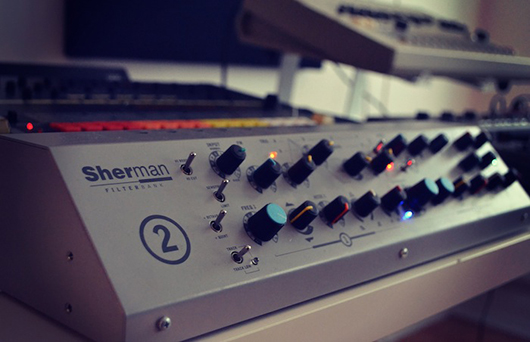Bicep Details the Five Most Essential Pieces of Its Studio Set-Up
UK duo Bicep (a.k.a. Andrew Ferguson and Matthew McBriar) has undergone quite the transformation over […]

UK duo Bicep (a.k.a. Andrew Ferguson and Matthew McBriar) has undergone quite the transformation over the past few years. Once known primarily for their blogging prowess and a keen ability to unearth quality bits of classic house, Ferguson and McBriar gradually made their way into the international DJ circuit and has boosted that effort by issuing a steady series of high-quality productions. And while Bicep’s initial offerings borrowed heavily from ’90s house and garage, Ferguson and McBriar have slowly expanded their sonic palette, often flirting with techno and making it so that the Bicep sound is now a lot harder to pin down. A big part of this musical evolution can be attributed to the duo’s growth in the studio, not only terms of production skills, but also in terms of how much gear is on hand. With a new 12″ slated for release later this month via Aus Music, we asked Ferguson and McBriar to go through their fleet of equipment and tell us about the five pieces that they think are the most essential to their craft.
Roland TR-909
Yeah, yeah the TR-909, you’ve heard it all before, blah blah… but we’ve got to include it as a real staple of our workflow. It was one of the first things we bought when we delved into the analog world, and it’s safe to say we will never part ways with it. For the kick alone, the 909 is worth it. Kicks are one of those things that are generally important when making dance music, and by just sticking it in a compressor or driving it through a filter, you have thousands of variant kicks to suit your track. I’m not sure where we would be without it now.
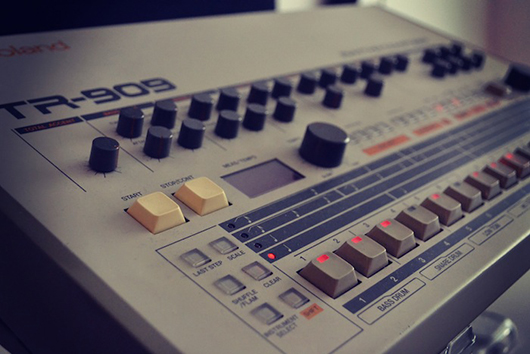
Roland SH-101
Like the 909, the SH-101 is renowned in the dance music world as a staple bass machine. This was one of the later things we bought, and with 15 different synths hooked up in the studio at the moment, nothing comes close to her low end. In an ideal world, we would have an ARP 2600—after working in the the studio with Simian Mobile Disco and with Max Pask in NYC, we fell in love with that machine, especially for the low end. But yeah, they are super expensive and not easy to come across in good nick!
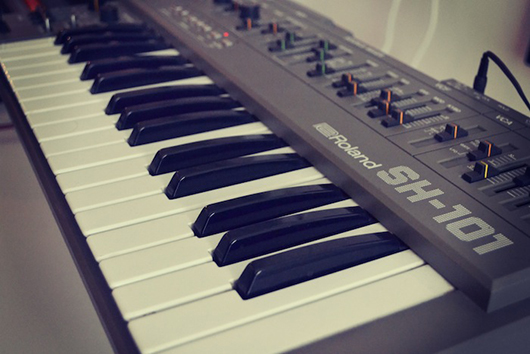
Korg Poly-800
Probably one of our favorite synths in the studio is the super-cheap Korg Poly-800. It’s not particularly groundbreaking or versatile, but it just has some really really ace noises. For the price and flimsy build, it really packs a massive punch, holding its own with our more expensive polysynths easily. We got this one modded with a pair of Moog filters (Polybeast mod), making it more hands-on and intuitive. You can really take its classic ’80s sound and bring it somewhere very dark and distorted!
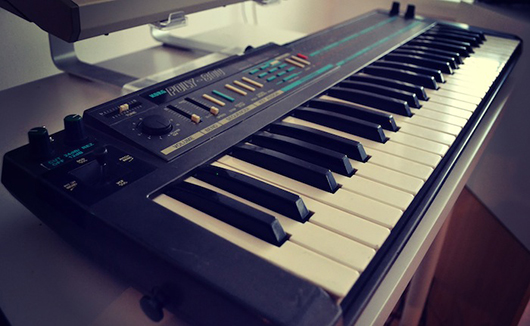
ARP Odyssey
We originally got the ARP Odyssey for a lead synth and for bass, as we heard it ‘really’ has got a sound of its own. Some days we are cool and get on with each other, other days it just bounces out of tune every minute… but that’s part of the character of this machine. Back in the ’70s, people loved it because they could get sounds like no other, but it was notoriously a hard synth to play live; even the smallest tweak can change up everything (you have to tune each of the oscillators by hand). As a studio instrument, that makes it fun—you know you are never going to get the exact same noise out of it twice. Apparently, Korg are going to remake this one like they did the MS-20. It will be very interesting to see what they come up with.
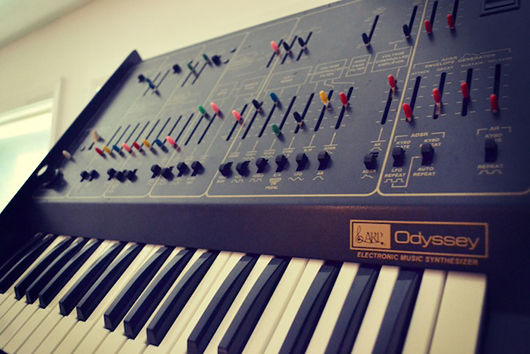
Sherman Filterbank 2
Last but not least, there’s the Sherman. This thing is amazing. The fact that it comes with an ‘Abuser’s Manual’ and about 30 warnings how not to blow up your speakers makes you immediately comprehend the power of it. We’re sure this thing alone has upped the tinnitus rate a couple of notches—in the wrong hands, it is an untamed beast. The Sherman is basically the best mod for any synth/drum machine you could ever want; run anything through it and there will always be interesting results. Even stick a £10 casio toy keyboard through it, and it will turn into a raved-out Juno Alpha with acid on top. We still don’t even know half the capabilities of this thing, but we’re looking forward to finding out (with earplugs in).
